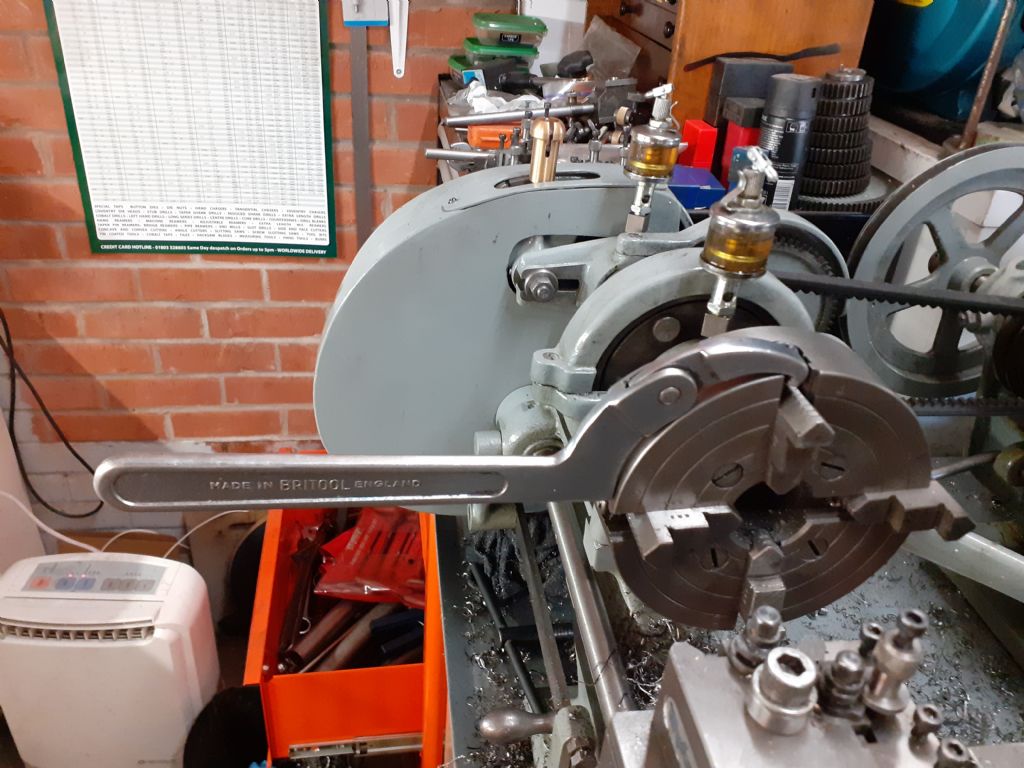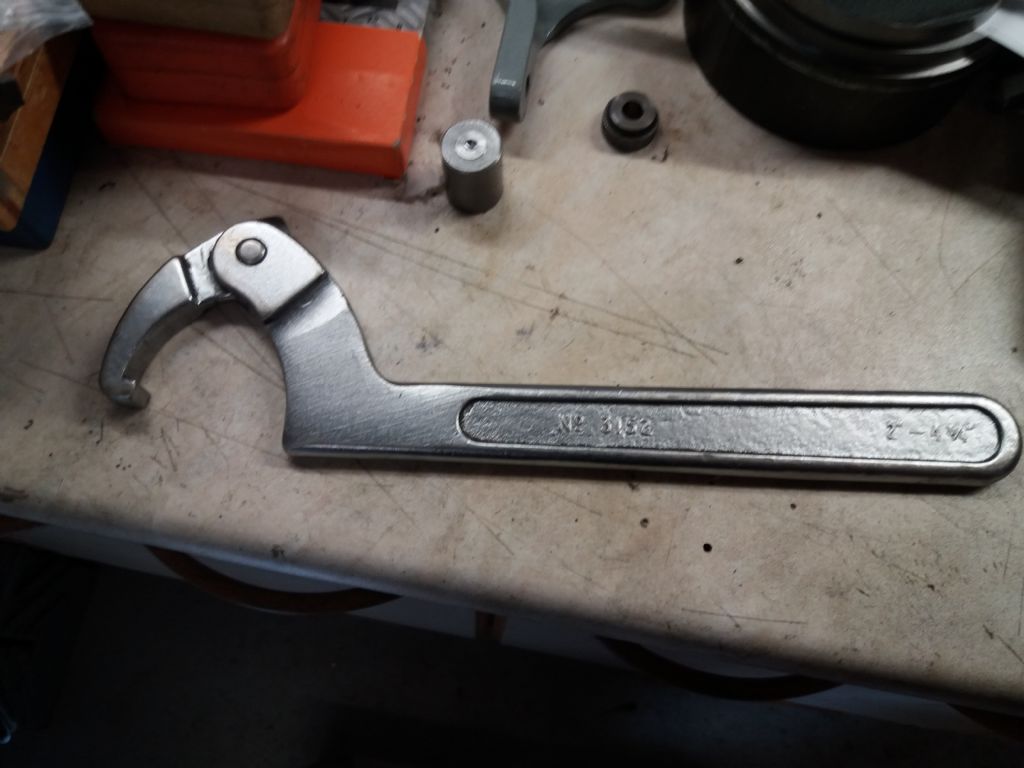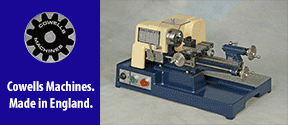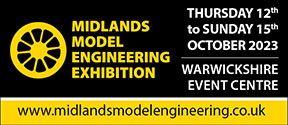Repairing a Myford 4 jaw chuck.
| Andrew Tinsley | 30/03/2022 10:58:45 |
| 1817 forum posts 2 photos | I have a standard Pratt Burnerd "Myford" 6" 4 jaw chuck. It is in very good condition, with the exception of two of the jaw screws. These have one side of the square chuck key slot which have been broken out. Looks as if a previous owner has used the chuck key to remove the screwed on chuck, with the inevitable damage! Why he managed to break two of the jaw screws is best left unasked ! I am sure that one can buy replacement screws from people such as Rotagrip. However they are not cheap and they also have Hex slots rather than the original square slot, thus requiring two chuck keys or a set of 4 which cost about the same as the chuck! It looks as though the jaw screws are cast iron. (can anyone confirm this?) easy enough to make a new "side" (the old broken bits didn't come with the chuck!). I am not sure about brazing/soldering them in position. I am not certain about silver soldering, due to the free carbon in the casting. I seem to remember that SIF bronzing is perhaps the best method? Regards, Andrew., |
| Hopper | 30/03/2022 12:08:05 |
7881 forum posts 397 photos | Are you sure the screws are cast iron? Steel would seem more likely. |
| Howard Lewis | 30/03/2022 12:33:40 |
| 7227 forum posts 21 photos | You can make new screws,l but the problem will be making bthe square socket, unless you have rotary broching facilities. (MUST make some, one day! There have been articles in MEW) Howard |
| Andrew Tinsley | 30/03/2022 12:36:45 |
| 1817 forum posts 2 photos | Hello Hopper, No I am not certain that they are cast iron, hence the query. Looking at the broken edges it does have the very grainy and uneven look of cast iron. Seem an odd choice of materials for the screw if it is cast. There again if it were steel I doubt if one side of the square would have broken out completely. Andrew. Edited By Andrew Tinsley on 30/03/2022 12:39:45 |
| bernard towers | 30/03/2022 12:48:07 |
| 1221 forum posts 161 photos | its easy enough to silver solder cast iron, just heat to red and wire brush to remove carbon/graphite and carry on as normal. |
| Andrew Tinsley | 30/03/2022 13:12:18 |
| 1817 forum posts 2 photos | Thanks Bernard, I could not remember the special precautions for cast iron. It seems a little odd that any carbon does not burn off at 700 degrees and needs brushing off. I must read up on the topic, it has been many years since I repaired a cast iron item and then I think I SIF bronzed it. Andrew. |
| ChrisLH | 30/03/2022 14:47:23 |
| 111 forum posts 7 photos | Interesting. How else should one unscrew a M-B 4 jaw chuck other than using the chuck key in the screw sockets ? I bougtht mine in 1966 second hand with the lathe and have always used this method without apparent detriment. Screws show all the signs of being steel, sockets are hex. though. |
| Speedy Builder5 | 30/03/2022 15:10:07 |
| 2878 forum posts 248 photos | Perhaps you should use a BIG ' C' spanner, but never seen one used on a screw on chuck. |
| Mike Poole | 30/03/2022 15:13:40 |
3676 forum posts 82 photos | I would find it extraordinary if the screws are cast iron, it is unsuitable in almost every respect. I would think they are hardened steel to resist wear and provide the required strength for the application. If the chuck key was the weapon of choice to unscrew the chuck from the spindle nose then it would need to be made much stronger than most 4 adjusters are. Mike |
| Andrew Tinsley | 30/03/2022 15:57:43 |
| 1817 forum posts 2 photos | I am assuming that the damage was caused by trying to unscrew the chuck, with the chuck key, when the chuck was well and truly stuck. Although this is pure surmise. I always undo my chucks by using a bar in the chuck jaws. I have seen several broken screws over the years and always thought it was because someone used the chuck key trying to unscrew the chuck. when it was well and truly stuck on the mandrel. How else would this sort of damage occur? Like most people I am amazed that the jaw screw would be made from cast iron, however it certainly looks like broken cast iron. How would one check? At the end of the day I am only interested in a repair and that seems to be either silver soldering or SIF bronzing..Let us assume it is cast iron, which is the better method? If it is steel then it doesn't matter which repair method is used. Andrew. Edited By Andrew Tinsley on 30/03/2022 16:00:52 |
| SillyOldDuffer | 30/03/2022 16:21:39 |
| 10668 forum posts 2415 photos | The grainy look is typical of a fatigue failure as shown in this photo.
Looks like cast-iron, but isn't. The appearance is more to do with how it broke than what it's made of. An unbroken screw of the same material would look very different if it were sawn, faced, polished, and dipped in acid to highlight the grain structure. Although Aluminium, Brass and Steel can be told apart by eye, much harder to identify particular alloys, especially if the internal structure has been altered by heat treatment or a breakage. The screw-jaw is a low carbon steel, probably something a grade or two tougher than ordinary mild-steel. A XRF analyser would identify the alloy in a few seconds: found a new one on ebay, only £15,000! Pratt Burnerd chucks in good condition are worth having. Might be fixable but I suspect Andrew's example will never be as good as new again! Probably scrap. Dave |
| Andrew Tinsley | 30/03/2022 16:36:08 |
| 1817 forum posts 2 photos | Dave, Totally amazed at your surmise that the chuck is scrap. It should be a straightforward repair to the screw adjuster. Even if SIF bronzing fails, which I very much doubt, it is a relatively straightforward turning job to make new. Unlike Howard, I do have a rotary broach, so the square hole is no problem. The aftermarket replacement screws were of the order of £40 each, so again well worth the cost to someone who can't do a repair If you are throwing out anything valuable that you think can't be repaired, then throw it in my direction! Andrew. |
| old mart | 30/03/2022 17:06:33 |
| 4655 forum posts 304 photos | Be aware that the screws can have square thread or ACME form, it is easy to tell. I made a set of four screws out of silver steel for the lightweight PB chuck at the museum and bought a set of new jaws cheap on ebay before finding out that two of the screw retainers had cracks. I have since sold the jaws, but still have the ACME screws, but they are not heat treated and I broached them with hexagons rather than the easily cracked square holes. We always use a strap wrench to remove chucks and never use a hammer on the chuck key. The original screws are definitely steel, and the cracks from the corners of the square holes are the result of the thin wall design not being able to stand up to the hamfisted operators. The lightweight Toolmex which I replaced it with has twice the thickness of steel in the corners of the square holes, but that is still no reason to chance breaking them. Edited By old mart on 30/03/2022 17:14:55 |
| Andrew Tinsley | 30/03/2022 17:28:32 |
| 1817 forum posts 2 photos | Thanks for that Old Mart. I will go ahead and SIF bronze a piece of silver steel in place and see what happens. Failing that I will make new, using silver steel and heat treat it. Glad that someone else doesn't use the chuck key to remove this type of independent 4 jaw. Lots of folk don't and finish up with this type of problem. Andrew. |
| Dave Halford | 30/03/2022 17:49:29 |
| 2536 forum posts 24 photos | Posted by ChrisLH on 30/03/2022 14:47:23:
Interesting. How else should one unscrew a M-B 4 jaw chuck other than using the chuck key in the screw sockets ? I bougtht mine in 1966 second hand with the lathe and have always used this method without apparent detriment. Screws show all the signs of being steel, sockets are hex. though. The issues start when someone belts the chuck key with a hammer. |
| SillyOldDuffer | 30/03/2022 18:10:26 |
| 10668 forum posts 2415 photos | Posted by Andrew Tinsley on 30/03/2022 16:36:08:
Dave, Totally amazed at your surmise that the chuck is scrap. It should be a straightforward repair to the screw adjuster. ... Andrew. By all means have a go, but whatever broke two jaw-screws might well have damaged the chuck body as well, perhaps distorting the whole thing. Restoring the chuck's original accuracy may be more difficult than just replacing the screws. Let us know - as I'm sure you've noticed, I'm often wrong! Dave |
| Grindstone Cowboy | 30/03/2022 18:22:02 |
| 1160 forum posts 73 photos | It's a four jaw - presumably not self-centering - so not much chance of it being scrap. Rob |
| Speedy Builder5 | 30/03/2022 20:08:21 |
| 2878 forum posts 248 photos | Depending upon size etc, could you use a 1/2" socket set extension as "stock" material to make a new screw, or perhaps a large hex head socket screw. Ie re-purpose some other tool with an existing socket to fit your chuck key. |
| David George 1 | 30/03/2022 22:20:41 |
2110 forum posts 565 photos | I use a C spanner on chuck groove as this part is clearance and won't damage the chuck or jaws. Just s tap with a mallet.
David Edited By David George 1 on 30/03/2022 22:21:38 |
| Andrew Tinsley | 30/03/2022 22:26:12 |
| 1817 forum posts 2 photos | Thanks Grindstone, Some sense at last! Andrew. |
Please login to post a reply.
Want the latest issue of Model Engineer or Model Engineers' Workshop? Use our magazine locator links to find your nearest stockist!
Sign up to our newsletter and get a free digital issue.
You can unsubscribe at anytime. View our privacy policy at www.mortons.co.uk/privacy
- *Oct 2023: FORUM MIGRATION TIMELINE*
05/10/2023 07:57:11 - Making ER11 collet chuck
05/10/2023 07:56:24 - What did you do today? 2023
05/10/2023 07:25:01 - Orrery
05/10/2023 06:00:41 - Wera hand-tools
05/10/2023 05:47:07 - New member
05/10/2023 04:40:11 - Problems with external pot on at1 vfd
05/10/2023 00:06:32 - Drain plug
04/10/2023 23:36:17 - digi phase converter for 10 machines.....
04/10/2023 23:13:48 - Winter Storage Of Locomotives
04/10/2023 21:02:11 - More Latest Posts...
- View All Topics
- Reeves** - Rebuilt Royal Scot by Martin Evans
by John Broughton
£300.00 - BRITANNIA 5" GAUGE James Perrier
by Jon Seabright 1
£2,500.00 - Drill Grinder - for restoration
by Nigel Graham 2
£0.00 - WARCO WM18 MILLING MACHINE
by Alex Chudley
£1,200.00 - MYFORD SUPER 7 LATHE
by Alex Chudley
£2,000.00 - More "For Sale" Ads...
- D1-3 backplate
by Michael Horley
Price Not Specified - fixed steady for a Colchester bantam mark1 800
by George Jervis
Price Not Specified - lbsc pansy
by JACK SIDEBOTHAM
Price Not Specified - Pratt Burnerd multifit chuck key.
by Tim Riome
Price Not Specified - BANDSAW BLADE WELDER
by HUGH
Price Not Specified - More "Wanted" Ads...
Do you want to contact the Model Engineer and Model Engineers' Workshop team?
You can contact us by phone, mail or email about the magazines including becoming a contributor, submitting reader's letters or making queries about articles. You can also get in touch about this website, advertising or other general issues.
Click THIS LINK for full contact details.
For subscription issues please see THIS LINK.
Model Engineer Magazine
- Percival Marshall
- M.E. History
- LittleLEC
- M.E. Clock
ME Workshop
- An Adcock
- & Shipley
- Horizontal
- Mill
Subscribe Now
- Great savings
- Delivered to your door
Pre-order your copy!
- Delivered to your doorstep!
- Free UK delivery!













 Register
Register Log-in
Log-in


